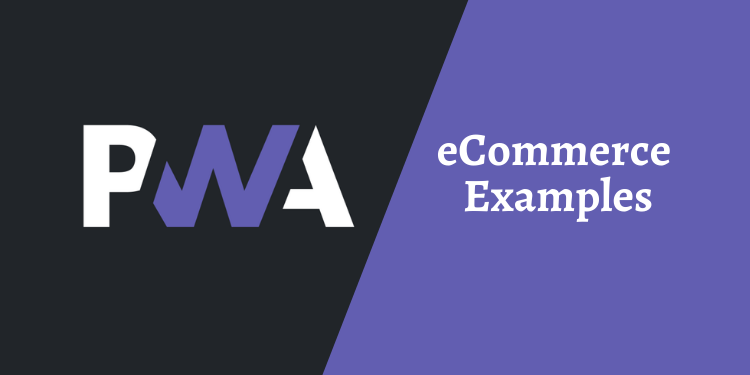
Progressive Web Apps (PWAs) have transformed how eCommerce sites engage with users. PWAs are here for a long time now, and many big eCommerce companies are already reaping the benefits out of it.
They combine the speed of mobile apps with the reach of websites. PWAs work offline, load quickly, and offer native-app-like interactions without installation. Retailers using this technology have improved conversions, reduced bounce rates, and enhanced mobile engagement.
In this article, we have mentioned few top companies that have implemented Progressive Web Apps(PWA). Take a look at these PWA eCommerce examples and you will know why PWA is vital for an online marketplace.
PWA eCommerce Example Websites
1. AliExpress
AliExpress adopted PWA to solve high bounce rates and slow mobile page speeds. The shift resulted in a faster site, leading to a dramatic increase in conversions from mobile users.
PWA allowed the platform to deliver push notifications, faster load times, and a smoother shopping experience even on slow connections. Post-launch reports showed improved session duration and greater engagement on repeat visits.
2. Flipkart
Flipkart launched its PWA under the name “Flipkart Lite.” The company targeted users with low-end devices and poor internet access.
The PWA matched the performance of native apps while consuming less data and storage. It led to a 70% increase in conversions. Flipkart Lite also reduced re-engagement costs through push notifications and home screen access.
3. Starbucks
Starbucks revamped its mobile ordering system by switching to PWA. The app loads in seconds and works offline, allowing users to browse menus and customize drinks without an internet connection.
The ordering experience mirrors that of native apps but runs smoothly even in bandwidth-constrained regions. After adopting PWA, Starbucks witnessed double the daily active users compared to its native app.
4. MakeMyTrip
MakeMyTrip’s PWA significantly reduced loading times. Travelers on mobile networks were able to search for hotels and flights with less friction.
The platform also enabled instant page transitions, personalized offers, and offline support. Metrics after launch showed a 3x increase in conversion rates and better engagement from first-time visitors.
5. Jumia
Jumia, one of Africa’s largest online retailers, adopted PWA to tackle mobile limitations across the continent. The solution helped reduce data usage and provided a snappy interface on 2G networks.
PWA’s offline mode ensured continuity even when connections dropped. The update delivered higher retention and a stronger checkout completion rate.
6. OLX
OLX deployed PWA to optimize its mobile classified listings. The site shrank page load times and simplified image uploads for users with limited devices.
With the app-like experience, users were more likely to return and post listings. Engagement metrics revealed an 80% increase in user re-engagement through home screen shortcuts and push messages.
7. Trivago
Trivago switched to PWA to sharpen the hotel search experience. With real-time filtering, faster load times, and seamless interactions, the app retained users on mobile for longer periods.
The offline-ready design allowed browsing of previously loaded listings without a connection. The PWA led to an uplift in click-outs to hotel sites and better mobile revenue.
8. Lenskart
Lenskart integrated PWA to reach users on low-bandwidth connections across India. The PWA handled 3D try-on features, product filtering, and cart operations smoothly.
It mirrored the core mobile app functions with far less resource usage. As a result, Lenskart recorded improved dwell times and a spike in conversion across tier 2 and 3 cities.
9. Tinder
Tinder built a PWA to scale its global presence without the burden of app store limitations. The PWA, named Tinder Online, brought the swipe functionality, matches, and chat experience to mobile browsers.
It served users in markets where app downloads were low but mobile browsing was common. The browser version matched performance benchmarks of native apps with smaller payloads.
10. Debenhams
Debenhams, a UK-based department store, redesigned its digital experience with PWA. The platform focused on speed and simplicity. The PWA loaded faster than their old mobile site and resulted in higher order values.
Reduced time to purchase and smoother checkout flow contributed to improved sales numbers. The shift also reduced bounce rates among mobile shoppers.
Why PWAs Matter for eCommerce
PWAs remove friction from the online shopping process. They reduce load times, work offline, and support features like push notifications and home screen icons. This reduces dependency on native apps while offering nearly the same functionality.
Faster speeds result in lower bounce rates. Offline support ensures the shopping journey continues even with unstable internet. These advantages lead to better retention, engagement, and conversions.
Final Thoughts
PWAs continue to redefine how eCommerce platforms operate across devices. Brands adopting this technology often see better user retention, faster checkout, and improved sales metrics.
By cutting down on data load, simplifying access, and enabling offline browsing, PWAs offer a winning combination for eCommerce in mobile-first markets.
Companies aiming to scale fast with limited app infrastructure benefit most from this approach. The top examples show that PWA is not a trend but a strategic move that produces measurable growth.
Also Read:

